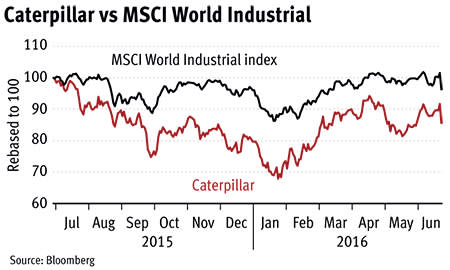Most investors would take issue with the notion that equity returns are predictable simply through the use of empirical analysis. Then again, few would deny the cyclical nature of the stock market. Is there an inherent contradiction here? Perhaps, but faced with a relentless flow of complex and sometimes contradictory messages, it’s little wonder that investors – and investment journalists for that matter – can often struggle to ascribe due weight to the many factors that form the basis of any given trade. We may be quite good at analysing individual pieces of information, but when it comes to synthesising them within a cohesive whole, it’s easy to miss context.
We at the IC shouldn’t bemoan the seeming complexity of equity markets. After all, it’s the reason why we’re still published after 150 years or so. But it remains the case that investors crave delineation and simplicity, which plays into the cyclical nature of markets. Is it just wishful thinking on the part of investors, looking to form patterns and correlations where none actually exist? And what are we to make of the more esoteric end of market analysis – assuming ‘market analysis’ is the appropriate term? Is it symptomatic of our collective desire to impose order on seemingly chaotic systems?
We’ve outlined some of the divergent information sources employed by investors to make sense of equity markets and their macroeconomic drivers. Some of the methods outlined, we feel, are grounded in logic, such as the Pallet/Cardboard Box Indicator, or rely largely on statistical analysis, ergo the January effects, while others conceivably tap into – and are maybe even driven by – what Swiss psychiatrist Carl Jung described as the “collective unconscious”, alternately described by investment analysts as ‘animal spirits’ or ‘irrational exuberance’.
We haven’t included some of the more exotic methods employed by investors to determine the trajectory of markets and/or securities. It obviously seems bizarre that somebody might actually reference the phases of the moon in an attempt to determine where we are in the economic cycle, to say nothing of the supposed relationship with the length of ladies’ hemlines. Some of the methods employed seem rather eccentric, whimsical at best, but it’s worth noting that Fibonacci sequences are routinely employed by technical analysts to derive meaning in trading patterns. No one is quite sure why, other than the claim that the ratios they generate are somehow commonplace in the natural world. But surely the point is that if enough investors buy into any given system, it becomes self-fulfilling anyway.
Olympian returns
It’s Olympic year and aside from the usual jingoism and hand-wringing over hopped-up athletes, there’s another reason why people might want to sit up and take notice – well, investors at any rate. That’s because there were positive outcomes for the Dow Jones Industrial average in two out of every three summer games completed since 1900, with an average rate of return of 4 per cent from the opening to closing ceremonies.
But before you get on the phone to your broker, a note of caution: many would argue, with some degree of justification, that the sample size is far too small; therefore, the results are statistically insignificant. The sample size is an important feature of any empirical study, but there may well be other dynamics at play here that rely more on abstract analysis; factors that aren’t governed by or explicable in terms of statistical analysis.
There’s enough anecdotal evidence to suggest that during the summer games markets gain a sense of optimism, even shrugging off some of the wider economic trends that might hold them back otherwise. And since the Los Angeles Olympics of 1984, host countries have generally seen a rise in their markets largely in tune with the performance of the Dow. Indeed, the FTSE 100 nudged up 4 per cent to 5847 points during the 2012 London Olympics. Anyone who lived in the capital through those games would probably tell you that the sense of optimism was almost tangible – but how can that be?
With the Olympic anomaly – assuming that’s what it is – we’re almost drifting into the realms of behavioural finance. It’s just conceivable that a collective experience like the Olympics could trigger a pre-cognitive bias or simply a desire to imitate other people’s exuberant mood – the herd instinct. Obviously there’s no logical reason why equity markets should respond positively to a fortnight of elite athletics, particularly if you’ve been lumbered with the bill as host nation. (It took Montreal, the host city in 1976, more than 30 years to meet the cost of staging the games, while the 2004 Athens Olympics ran billions of euros over the original budget – at state expense).
Study after study has shown that valuation errors (forget efficient markets) often arise from collective denial. In his much-lauded 2000 work Irrational Exuberance, economist Robert Shiller explained why markets are “driven to a certain extent by a self-fulfilling prophecy based on similar hunches held by a vast cross section of large and small investors”. So you don’t always need to justify why a market is moving in a certain way to make money; you only ever have to determine that a trend is emerging. Put simply: if enough investors are acting irrationally through a given period, surely that provides an opportunity for others.










